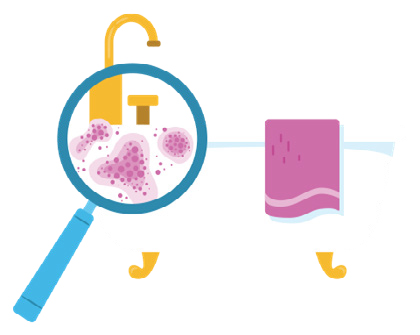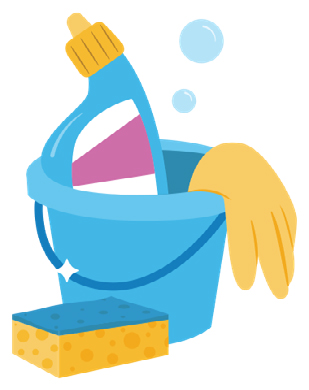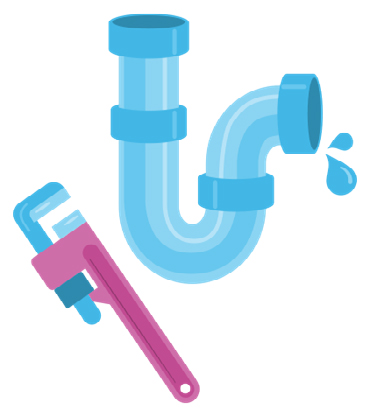Mold | Overview
Providers and patients: The information below can be downloaded and printed in English and Spanish from the links below.
Your health and mold in your home
Mold is a fungus that grows in areas where there is water, dampness, or high humidity. It can cause a musty and sour smell.
Mold may be found in bathrooms and in areas with water from leaking a roof or pipes. Flooding can also lead to mold.

Where does mold grow?
Mold grows in dark spaces with warm temperatures, high humidity, and poor air flow.
Mold can grow on many surfaces including:
- paper
- fabric
- furniture upholstery
- wood
- sheetrock
- cellulose wall insulation
- soap scum
- leather
- wallpaper glue
Check walls, tiles, grout, and humid areas, like bathrooms and the basement.

How does mold affect health?
Mold can irritate your child’s eyes, nose, throat, and skin. It can trigger asthma, asthma-like symptoms and allergies. Symptoms may include:
- stuffy or runny nose
- itchy or watery eyes
- dry throat
- wheezing
- difficulty breathing
- dry cough
- skin rash
- headaches
- fatigue or weakness
See a health professional if you think your child’s symptoms are from being around mold.
FYI: We don’t recommend testing blood or urine (pee) for mold toxins.

How do you clean up mold in the home?
Clean hard surfaces, including showers, using detergent and water.
Other cleaning solution options include:
- Diluted household bleach (use 1 cup of bleach or less in 1 gallon of water).
- "Green" alternatives, like vinegar.
- Never mix bleach with other household cleaners, especially those with ammonia.
Dry the cleaned surface fully.
Safety tips:
- Wear gloves.
- Wear goggles.
- Don’t use bleach in small spaces
- Make sure to have good air flow when cleaning.
Note: Absorbent or porous materials may need to be thrown away.

How can you prevent mold growth?
Mold spores are difficult to kill. The key to limiting mold is early detection and proper cleaning.
- Fix leaking pipes and other sources of moisture as soon as possible. Clean and dry damp spots within 48 hours.
- Keep indoor humidity between 30 and 50 percent.
- Allow good air flow between furniture, ceiling, walls, and floors.
- Keep heating, ventilation, and air conditioning drip pans clean and working properly.
Resources
For more resources on mold, visit:
This document was supported by the American Academy of Pediatrics (AAP) as well as the Asthma and Allergy Foundation of America, New England Chapter. It was funded (in part) by a cooperative agreement with the Centers for Disease Control and Prevention/Agency for Toxic Substances and Disease Registry (CDC/ATSDR). The U.S. Environmental Protection Agency (EPA) supports the PEHSUs by providing partial funding to CDC/ATSDR through an interagency agreement. The findings and conclusions presented have not been formally disseminated by CDC/ATSDR or EPA and should not be construed to represent any agency determination or policy. Use of trade names that may be mentioned is for identification only and does not imply endorsement by the CDC/ATSDR or EPA.

